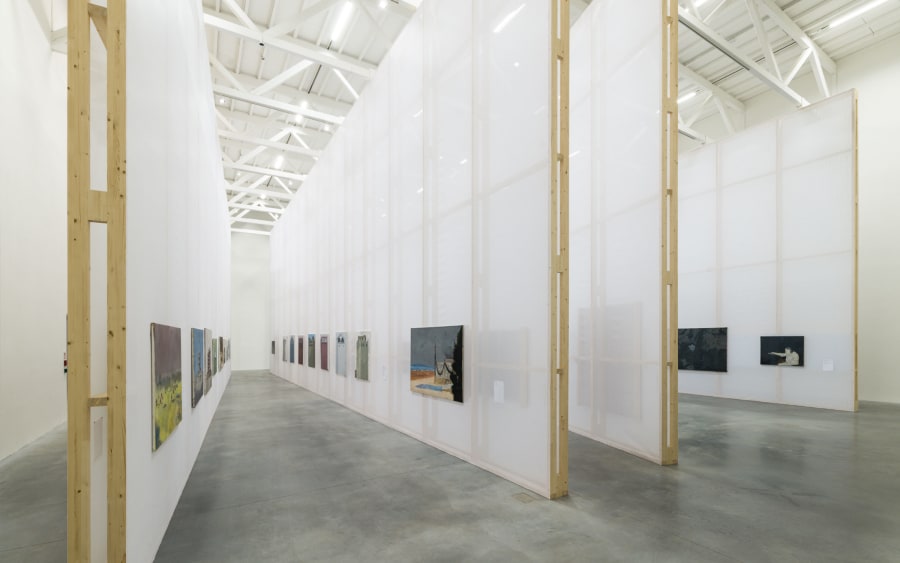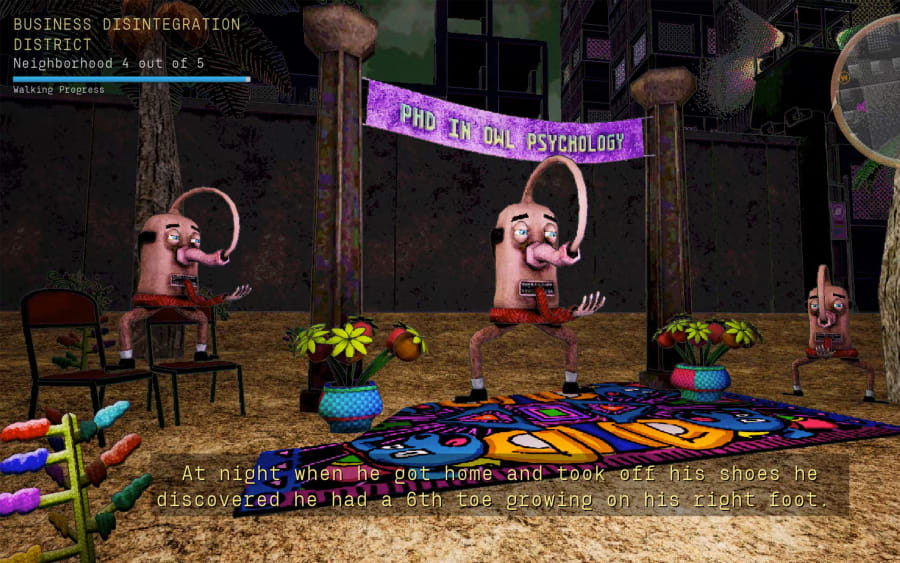‘Our sensitivities are shaped in childhood; it’s when we find the themes and ideas that we want to work with. I grew up in Tashkent, in a building with 21 flats inhabited only by people who worked in cinema, from makeup artists to editors. On the other side of the road was Uzbekfilm studios [the largest and oldest film studio in Uzbekistan], as well as the Central State Archive of the Republic of Uzbekistan, which includes film, sound, and photography archives. My father is a director of cinematography, working in fiction and documentary films in Uzbekistan, and he brought me on set. Film was a natural environment for us. My brother is 8 years older than me and a painter. I would spend hours watching him drawing and researching. I received a sense of composition through him.
‘The presence of my grandmother is very important too. My father studied in Moscow and got the best from the Soviet era in terms of education and his profession. My grandmother had the opposite perspective, a total contradiction to his. Her family had suffered through the establishment of the Soviet Union. She could not accept that we spoke Russian or wore modern dress and chose professions that she could not understand. Growing up between these two different ways of being and looking at life has influenced me a lot.
‘I grew up during perestroika [in the late 1980s] when Soviet ideology was collapsing – everything was collapsing! It created a void, there was no cultural life. There were no public film screenings, so my brother began bringing home VHS tapes. These were films we discovered by word of mouth, which have stayed with me. There were films by internationally famous directors like Andrei Tarkovsky and Sergei Parajanov as well as lesser-known Uzbek Soviet filmmakers like Ali Khamraev and Rustam Khamdamov. They didn’t use classical cinematic language, nor were they working under the shadow of ideology. Khamdamov’s worlds are rooted in mythology, but he doesn’t limit himself to Central Asia; he might start from the Slavic or Japanese perspective. Khamraev made films for himself alongside projects for the state, which helped him navigate censorship. His films created a space for women to have a voice. These four directors created four different timeless universes that go beyond politics and their immediate context.
‘When you have to work to access something, it makes it even more valuable. These films showed us that there was another way of making films. Otherwise, we didn’t know what was happening around the world in arthouse cinema beyond the very big names.
‘In the region, we speak a lot about the establishment of the Soviet Union, the creation of national states, and all the transformations that happened in society, but we haven’t yet looked properly at perestroika and the Soviet collapse. We need distance to analyze it. For me, as an artist, this is a space that continues to slowly open up and attracts me. In it, I see how the creation of one idea replaces another. What do we do with this void?
‘My first film was a documentary, Aral: Fishing in an Invisible Sea (2004), which I co-directed with Carlos Casas and which looks at three generations of fishermen trying to survive on the shores of the Aral Sea, a lake that has largely disappeared in part due to the diversion of water for the cotton industry. It’s an area with a lot of environmental issues and people trying to get by. I initially made a short fiction in the area, but it wasn’t sincere; I learned that it had to be documentary. I couldn’t interfere, I could only observe and take what is given.
‘While I never use traditional music from Central Asia in my artworks, it has been very important for my development as an artist too. In 2004, I was commissioned by the Aga Khan Music Programme to make 10 documentaries about traditional musicians in the region. It was a 7-year project and it taught me about working with people in the field. It also meant I got to know the Central Asian region, as most traditional musicians don’t live in urban spaces but rather small towns and villages. It’s one thing to learn about culture from reading books or from what your grandmother says, but the physical experience of crossing lands is totally different. You understand that there is a unity, be it in terms of language or a common historical space.
‘My first feature film, 40 Days of Silence (2014), was a big production and it was a very long process. It began in 2005 when I conceived the project within the DAAD Artists-in-Berlin Program. It was then developed via the Sundance Directors Lab in Utah in 2010. After a challenging funding process, going to many different international funds and producers, I was unable to secure permission to shoot in Uzbekistan and ended up shooting in Tajikistan in 2011. The editing process took a long time. When it was finally done, I felt like I only made it because I had to finalize the many years of work that went into it. I thought, “Am I going to make all of my films this way?” If you’re a musician, you play, if you’re a dancer, you dance; it’s not a huge collective enterprise with a big budget. In film, each penny of international funding comes with an expectation that affects your creativity. That experience pushed me towards the art world and what I am making now – I started making films for myself, with no external expectations or responsibilities. There was no money – just me and the necessity to create. For a long time, my films were not seen; they were just made one after the other, and sometimes I would have doubts and would feel very weak. It would make sense for me, but maybe it was nonsense to others.
‘Before 40 Days of Silence had secured cinema distribution, I received a group email about an open call to propose work for the Central Asian pavilion for the 2013 Venice Biennale. I remember thinking, “It’s not for me, I’m not an artist.” I studied in the Soviet system, where the artist paints, draws, or sculpts; film was treated as a different discipline. But I had made a work, Zukhra (2013), using the casting footage from 40 Days of Silence. This film shows a woman sleeping, while the soundtrack combines archival news recordings of Uzbekistan’s first president with narration of the legend of a young woman who becomes the planet Venus and other sounds based on what I excavated from my memory. My partner encouraged me to submit it, and it was accepted. I knew nothing about the art world, but suddenly I had entered a space without definitions about documentary and fiction, short or feature. I felt liberated.
‘Many of the themes that you see in Zukhra and that my work continues to explore began with my grandmother. Through her, I began to understand the consequences of the establishment of the Soviet Union: the disappearance of local values, sensitivities, and knowledge. I came to see that society was split between male and female universes. The Central Asian female world is more connected to local forms of knowledge that have survived religious and political transformations in the region; a space where beliefs, rituals, and traditions about being deeply bound to and dependent on our environment, on animal and vegetative worlds, are guarded by women.
‘Building an awareness of our connections in Central Asia is one of the reasons I founded the art collective Davra in 2021, when I was invited to participate in documenta 15. We come from four republics, each of which has its own dynamics. Our projects are a way to rethink what Central Asia is, what territories we would like to explore, and how we can build an alternative geography to what is typically understood online. I’m looking at the region as a solid entity, mixing the languages and collective memories and exorcising our common traumas to build a space safe where we can support each other.’
Skye Sherwin is an art writer based in Rochester, UK. She contributes regularly to The Guardian and numerous art publications.
Caption for top image: Saodat Ismailova, 40 Days of Silence (still), 2014. Courtesy of the artist.
Published on September 5, 2024.


